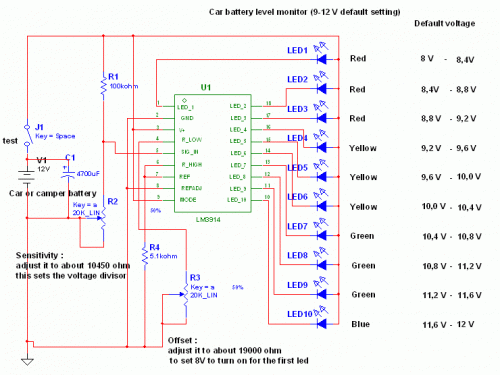Most 3-terminal active components can be tested statically using just an ohmmeter. But when you have a lot of these devices to test, the procedure soon becomes boring. That’s where the idea came from to combine fast, easy testing for these types of device into a single instrument.
The unit described here enables you to test NPN and PNP bipolar transistors, N-or Pchannel FETs or MOSFETs, UJTs, triacs, and thyristors. Regardless of the type of device, the tests are non-destructive. Universal connectors allow testing of all package types, including SMDs (up to a point). The unit lets you change from one type of device to another in a trice. It avoids using a multi-pole switch, as they’re too expensive and hard to find.
. Circuit diagram :

Universal Tester for 3-pin Devices Circuit Diagram
.
.
Here’s how to build a versatile instrument at a ridiculously low cost. IC1 is a 4066 quad CMOS switch which will let us switch between bipolar transistors and FETs. LEDs D1–D4 tell us about the condition of the test device, when we press the ‘Test’ button. The 4066 can only handle a few milliamps, not enough for the other component types to be tested, hence the reason for using relay RE1. This 12 V relay offers two NO contacts. The first applies power to the UJT test circuit, the second applies it to the triac and thyristor test circuit.
.
Extensive testing has shown that the best way to test UJT transistors is to do so dynamically, with the help of a relaxation oscillator. Net-work R11/C1 sets the oscillator frequency to around 2 Hz. On pin B1 of the UJT we find a nice sawtooth, which is not of much interest to us here. However, pin B2 gives good but very short pulses. IC2, wired as a monostable, lengthens these pulses so they can be clearly seen via LED D5.
The relay’s second pole is going to drive the thyristor’ sortriac’s trigger pin. The value of R18 is a good compromise with respect to the varying trigger currents for this type of device. Resistor R17 is important, as the hold-ing current must be high enough for a triac; 250 mA is a good compromise. LED D6 tells you if the device is in good condition or not; but watch out, the test result must be con-firmed by briefly cutting the power in order to reset the triac.
On the web page for this article [1] you’ll find the author’s CAD files (PCB layout and front panel) along with some photos of his project. On the prototype, the LEDs and the ‘Test’ button were wired onto the copper side of the PCB. The six female connectors for the devices being tested were salvaged, but there are lots of models available on the market (the pitch is standard). The test cable crocodile clips must be as small as possible for testing SMD devices.


